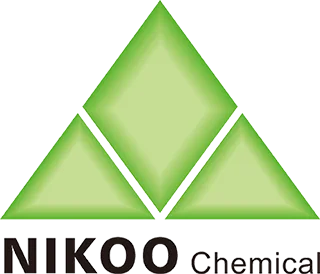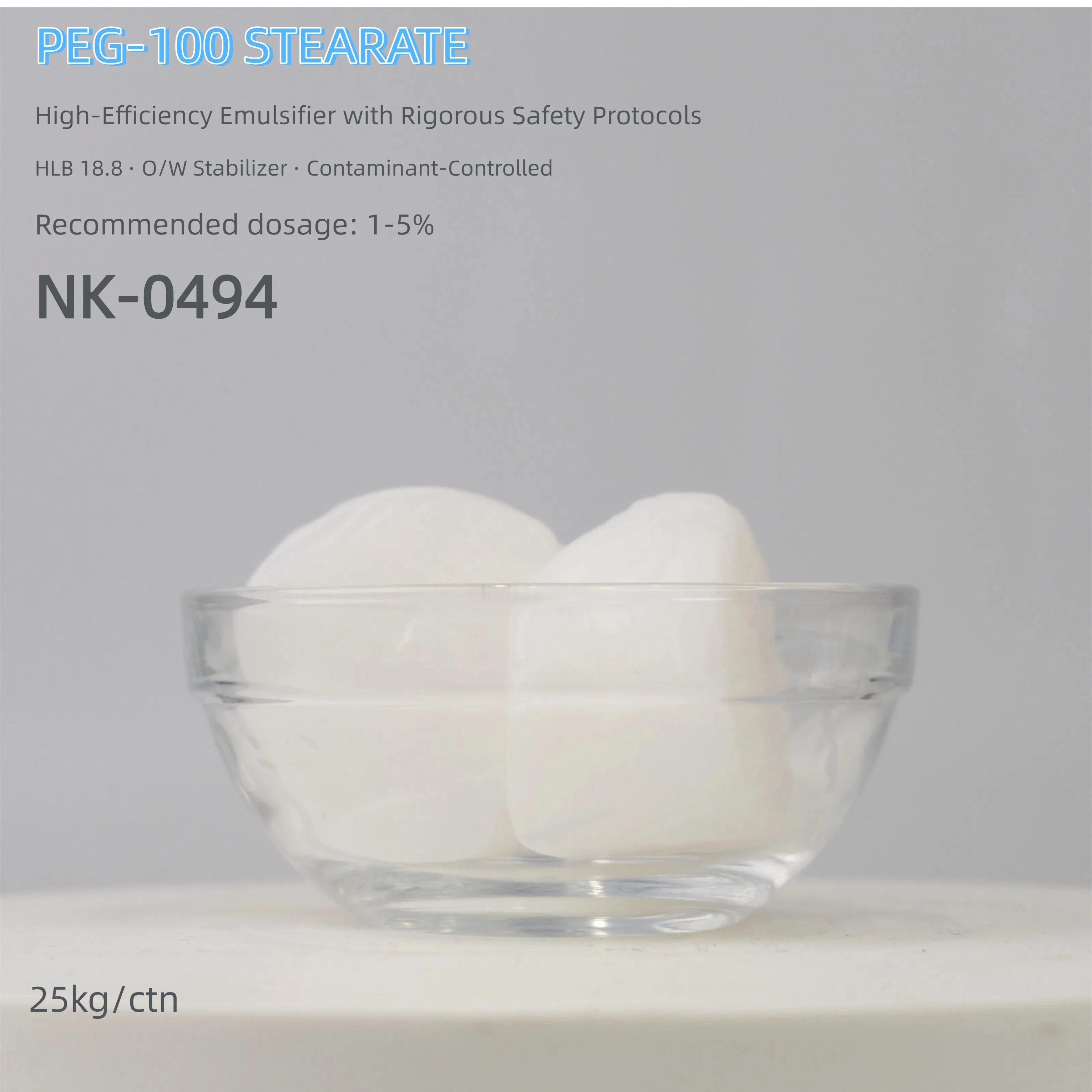PEG-100 STEARATE: High-Efficiency Emulsifier with Rigorous Safety Protocols
Model No. : NK-0494
Brand Name: NIKOOCHEM
Place of Origin: Guangdong, China
Product Names: PEG-100 STEARATE
INCI: PEG-100 STEARATE
CAS No.: 9004-99-3
Appearance: White waxy solid
HLB Value: 18.8
Melting Point:45–55°C
Active Content: ≥98%
1,4-Dioxane:≤0.5ppm
Ethylene Oxide:≤0.1 ppm
Storage:2 years (sealed, <25°C)
MOQ : 25kgs/ctn (sample available)
Packaging : 25kgs/ctn
PEG-100 STEARATE: High-Efficiency Emulsifier with Rigorous Safety Protocols
HLB 18.8 · O/W Stabilizer · Contaminant-Controlled
Product Overview
NIKOO's PEG-100 Stearate (INCI: *PEG-100 Stearate*, CAS 9004-99-3) is a plant-derived non-ionic surfactant engineered for superior oil-in-water (O/W) emulsion stability in cosmetics and pharmaceuticals. This white waxy solid (molecular weight: 328.5 g/mol) delivers exceptional emulsification performance at low doses (0.5–3%), while adhering to NIKOO's stringent contaminant control standards – including ≤0.5 ppm 1,4-dioxane and ≤0.1 ppm ethylene oxide residues
PEG-100 Stearate is a nonionic surfactant composed of stearic acid and polyethylene glycol (containing an average of 100 ethoxy units). It has an emulsifying effect and is widely used in cosmetics and personal care(creams, serums, and sunscreens) products.
Core Applications & Benefits
Differences between PEG-100 Isostearate and PEG-100 Stearate
1. Structural Difference: PEG-100 isostearate is produced through the esterification reaction of polyethylene glycol and isostearic acid, a branched fatty acid. In contrast, PEG-100 stearate is produced by the reaction of polyethylene glycol with linear stearic acid. This structural difference leads to differences in their physical properties and functional applications.
2. Physical Properties: Due to the branched structure of isostearic acid, PEG-100 isostearate exhibits better flowability at low temperatures, while PEG-100 stearate may solidify or crystallize at low temperatures due to the linear structure of stearic acid. This makes PEG-100 isostearate advantageous in certain applications requiring low-temperature stability.
3. Applications: PEG-100 isostearate, due to its excellent solubility and emulsifying properties, is commonly used as an emulsifier, thickener, and stabilizer in cosmetics. It is particularly suitable for products requiring low-temperature stability, such as skin lotions and sunscreens. PEG-100 stearate, due to its high melting point and excellent lubricity, is often used as a suppository base or lubricant in the pharmaceutical industry.
Application Examples of PEG-100 Isostearate
1. Skin Lotion: PEG-100 isostearate acts as an emulsifier and stabilizer in skin lotions, helping to evenly mix the water and oil components to form a stable emulsion system. Its low-temperature stability also ensures that the product will not deteriorate due to temperature fluctuations during storage and transportation.
2. Sunscreen: In sunscreen, PEG-100 isostearate not only acts as an emulsifier but also enhances the spreadability and application of the product, making it easier to apply and improving the sun protection effect.
Application Examples of PEG-100 Stearate
1. Pharmaceutical Suppositories: Due to its high melting point, PEG-100 stearate is often used in the preparation of suppository bases. Within the suppository, it combines with other ingredients to form a stable solid state, making it easier to store and use. Upon insertion, the PEG-100 stearate gradually melts and releases the drug component.
2. Lubricant: In pharmaceutical and food processing, PEG-100 stearate is used as a lubricant to reduce equipment friction and improve production efficiency. Its excellent lubricity ensures smooth production without negatively impacting product quality.
Storage & Handling
Conditions: 25°C max, ≤60% humidity, sealed/light-resistant containers
Safety: Non-irritating; use gloves/goggles during industrial handling
Contact Us:
For samples, technical data sheets, or formulation support, reach out to our sales team today!

